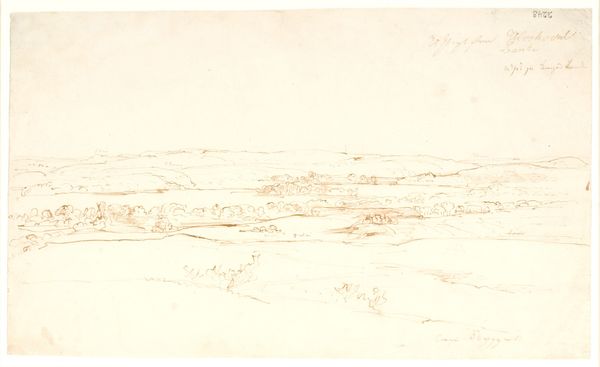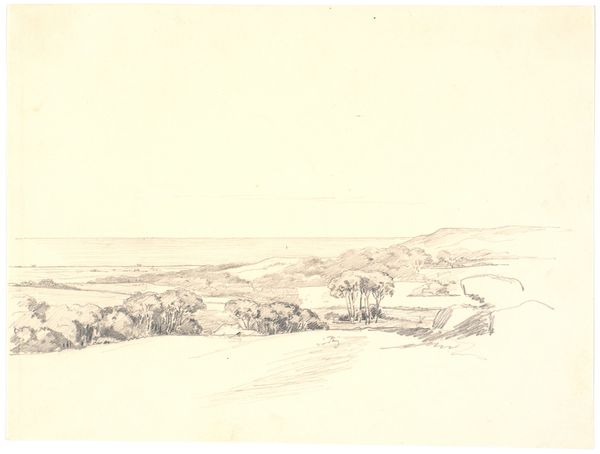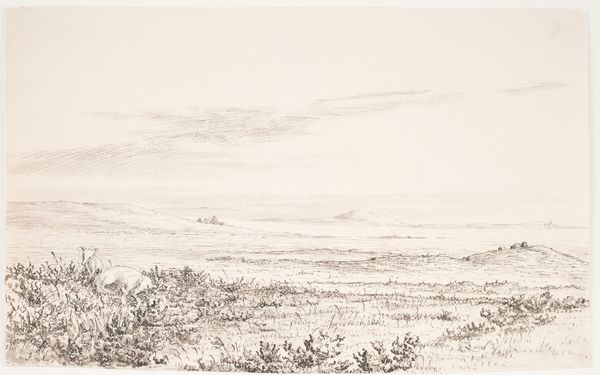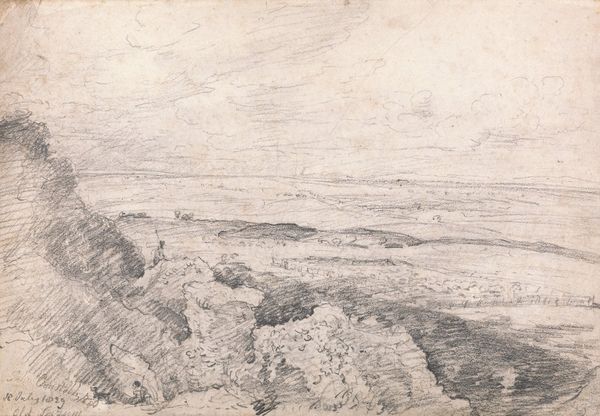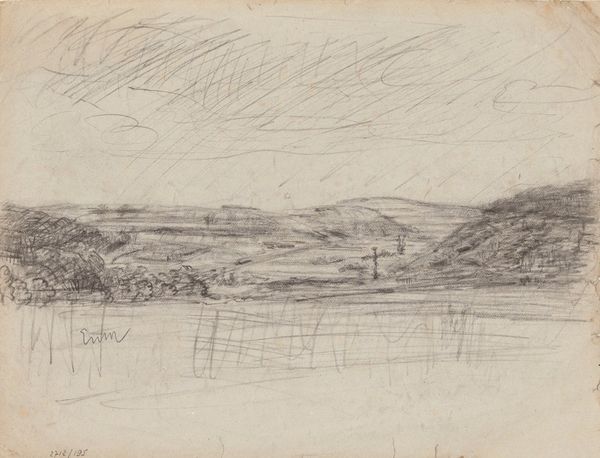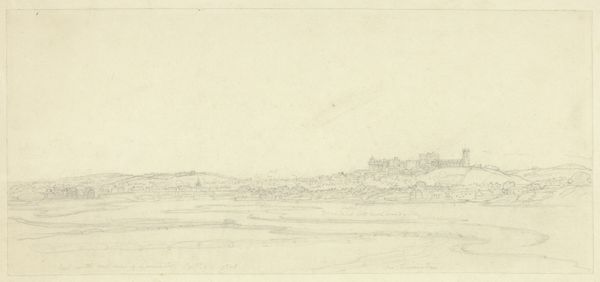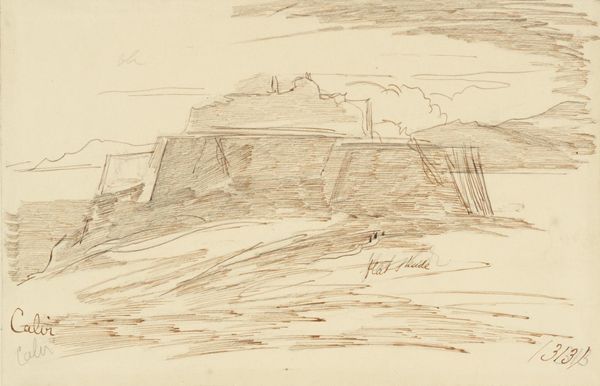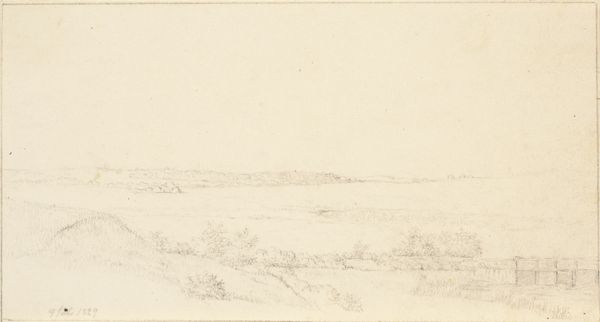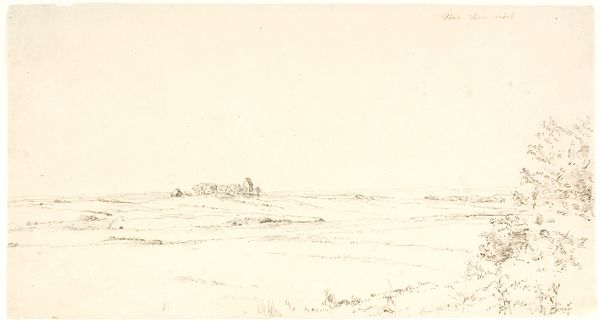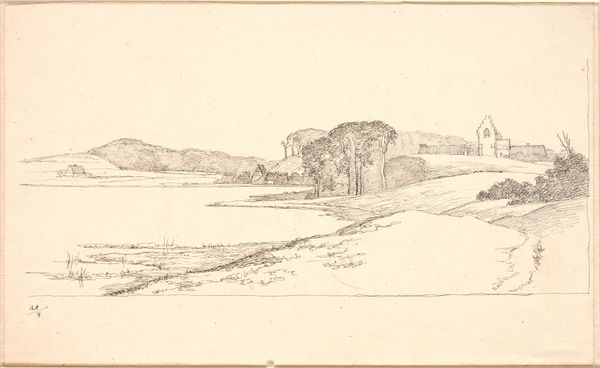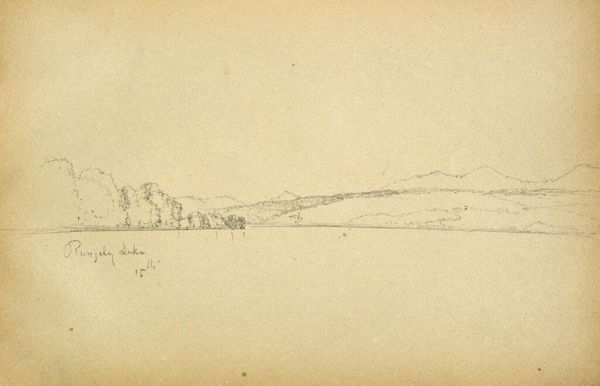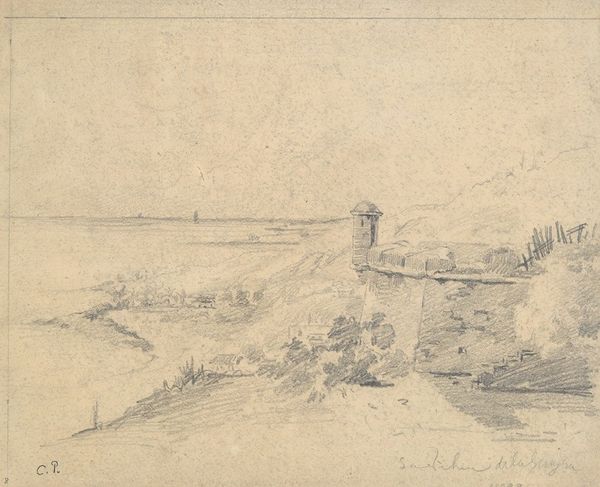
Copyright: Public Domain: Artvee
Editor: Here we have Magnus Enckell’s "Maisemaluonnos," a landscape sketch from 1891 rendered in pencil and graphite. It has such a subdued, almost melancholic mood, with the hazy, undefined horizon. What do you see in this piece? Curator: This work is ripe for interpretation through the lens of its historical moment. Enckell, working in the late 19th century, grappled with emerging artistic styles alongside the complexities of Finnish national identity under Russian rule. Consider how the muted tones and the sense of quiet might reflect a longing for autonomy, a search for a distinct visual language rooted in the Finnish landscape, apart from dominant Russian or Swedish aesthetics. Do you think this sketch evokes a sense of place, or perhaps placelessness? Editor: I do think it could be either, honestly. The ambiguity in the depiction could definitely be tied to that search for identity. It's like he's trying to define the land, but also can't quite grasp it. Curator: Exactly. And it’s crucial to recognize that artistic endeavors are never truly separate from political and social realities. Enckell, consciously or unconsciously, was engaging with those realities. Looking at his later Symbolist work alongside this, it really feels like a quiet starting point, a turning away from established modes. How might we interpret that subtle rebellion today? Editor: It definitely gives a new appreciation for what seems like a simple landscape sketch. Thinking about the social and political elements really helps connect the piece to a larger historical narrative. Curator: Absolutely, and remembering art doesn’t exist in a vacuum enriches our engagement with the artwork, and invites us to consider whose stories get told and how.
Comments
No comments
Be the first to comment and join the conversation on the ultimate creative platform.
